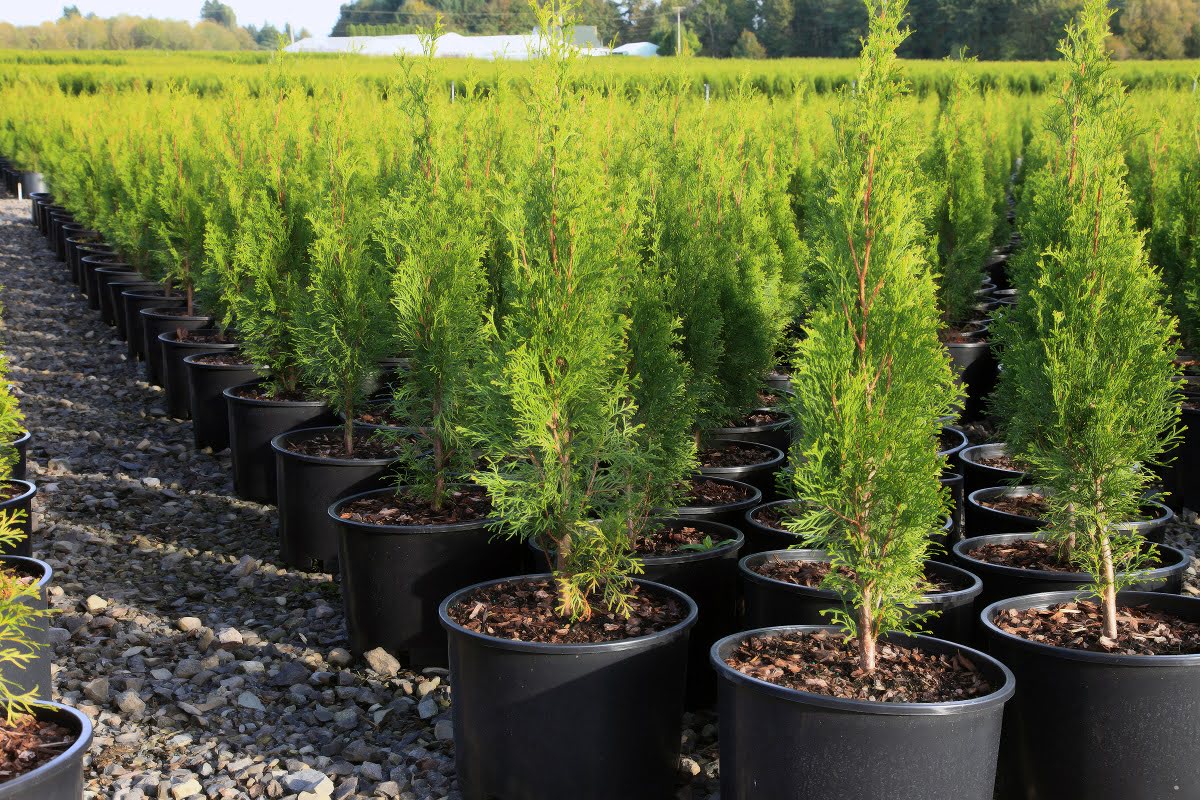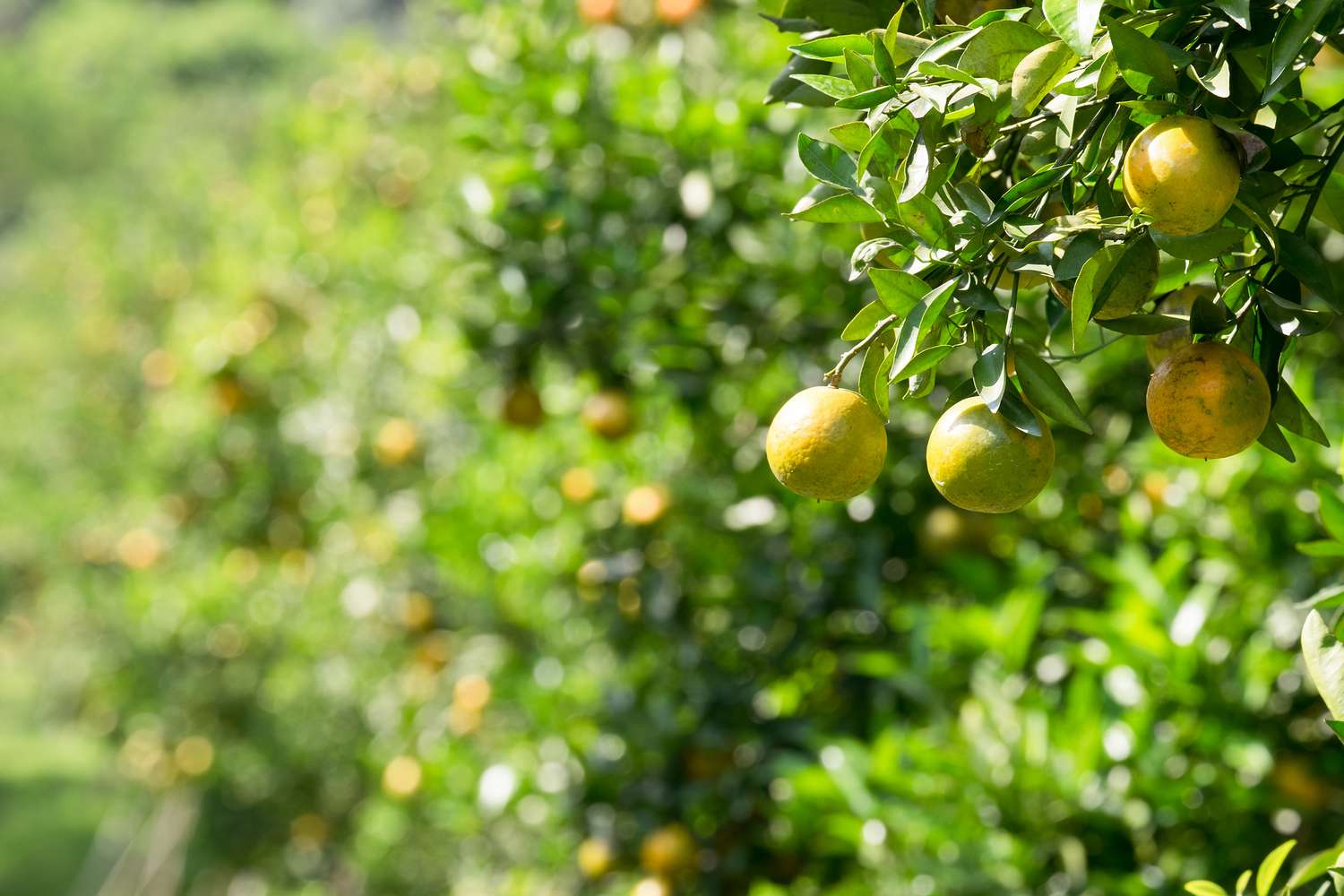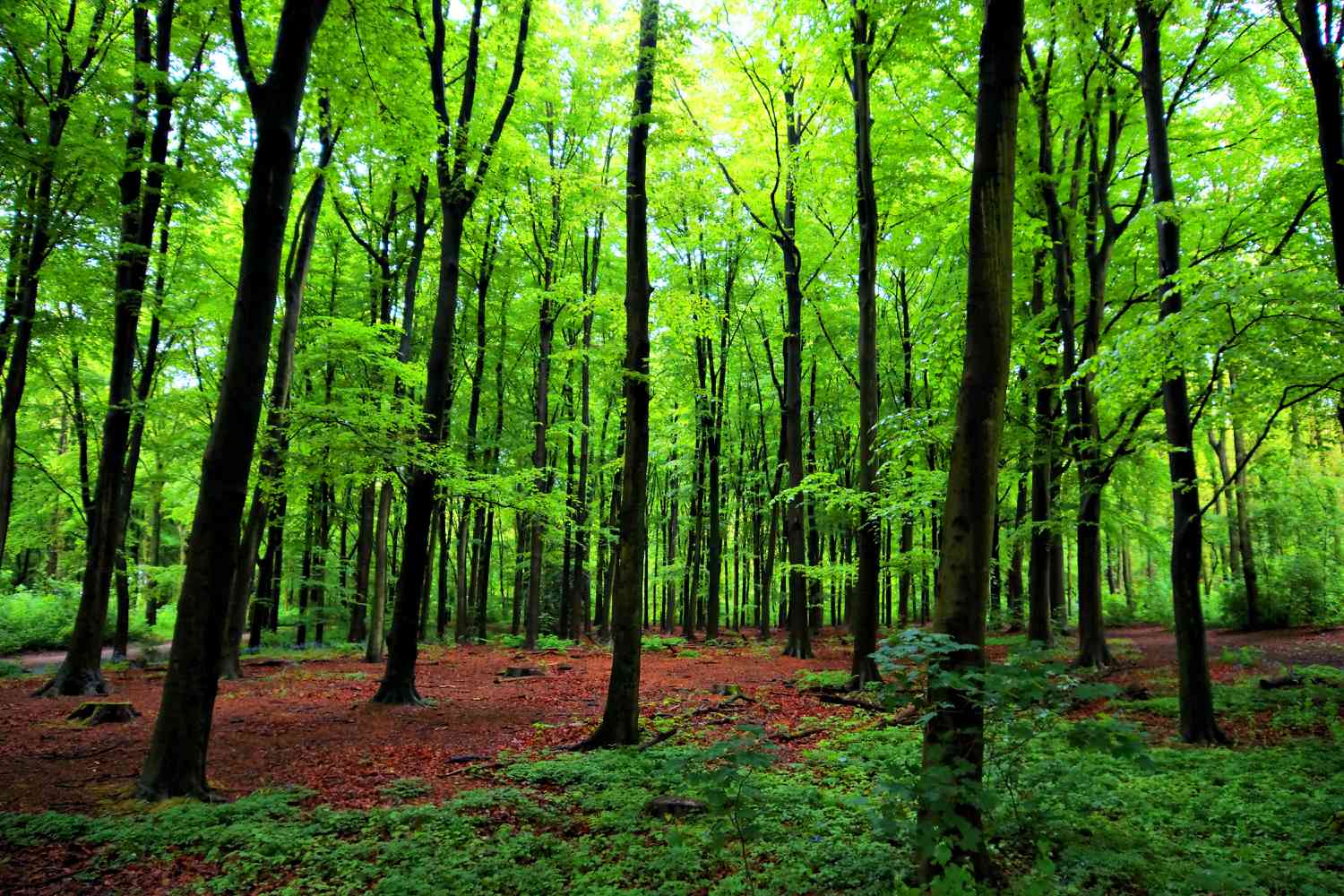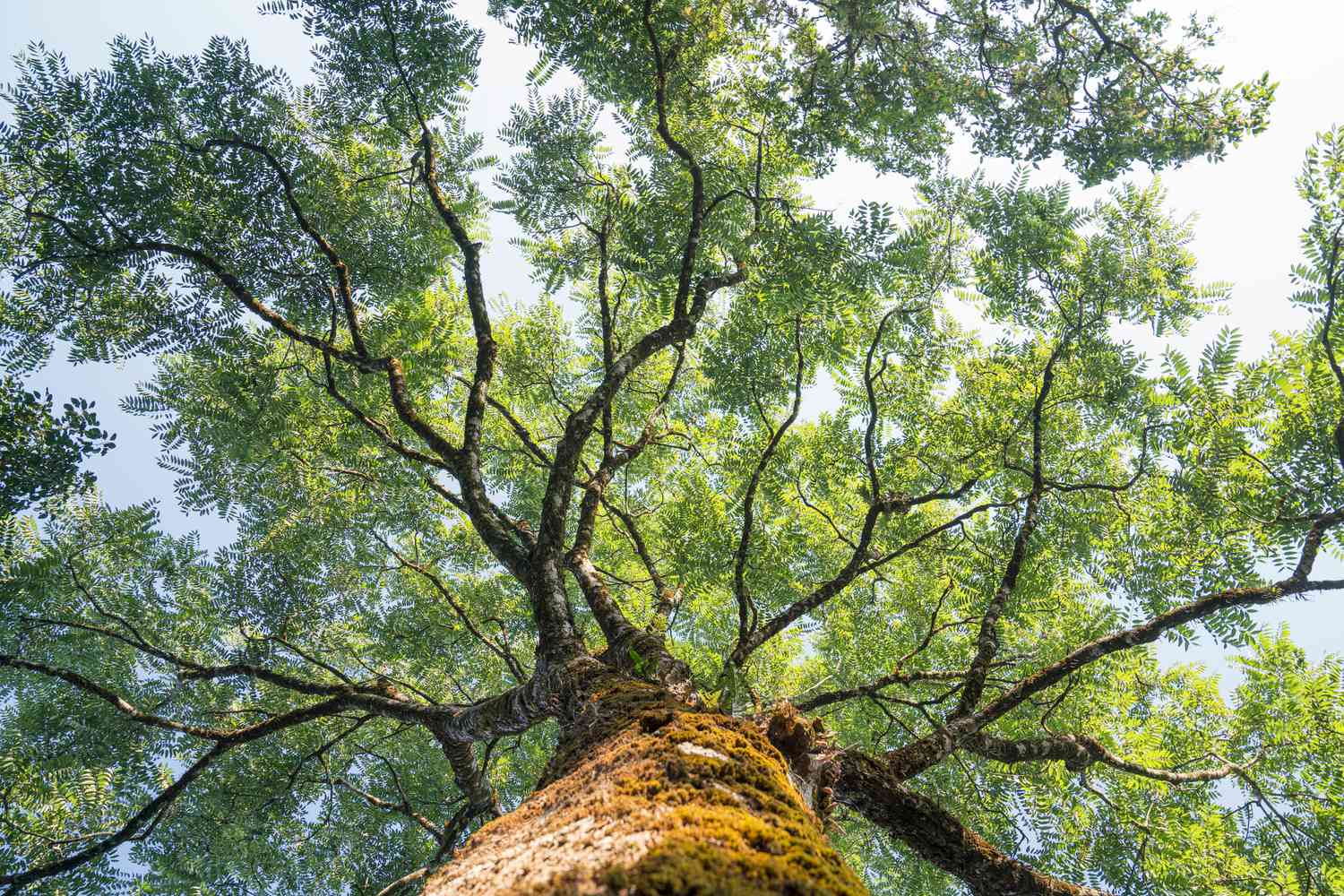Home>Gardening News and Trends>Latest News>Which Two Habitat Lack Trees Shrubs And Liquid Water


Latest News
Which Two Habitat Lack Trees Shrubs And Liquid Water
Published: October 18, 2023
Latest News on Which Two Habitat Lack Trees, Shrubs, and Liquid Water
(Many of the links in this article redirect to a specific reviewed product. Your purchase of these products through affiliate links helps to generate commission for Chicagolandgardening.com, at no extra cost. Learn more)
Table of Contents
Introduction
Habitats are the natural environments in which various organisms reside. They are characterized by specific physical, chemical, and biological factors that influence the types of species that can survive and thrive within them. Trees, shrubs, and liquid water play crucial roles in defining and sustaining habitats, providing essential resources and support for a wide variety of organisms.
Throughout the world, different types of habitats exist, each with its own unique set of characteristics and ecological dynamics. From lush forests to arid deserts, habitats vary in terms of climate, vegetation, and availability of water. However, there are two particular habitats where trees, shrubs, and liquid water may be scarce or completely absent: deserts and tundra.
These habitats may seem inhospitable and devoid of life at first glance, but they are home to a range of specially adapted plants and animals that have evolved to withstand the challenging conditions. In this article, we will explore the importance of trees, shrubs, and liquid water in habitats and delve into the unique characteristics of deserts and tundra, highlighting how life thrives in these seemingly harsh environments.
Definition of Habitat
Habitat refers to the natural environment or ecological setting in which a particular organism, species, or community of organisms live. It encompasses the combination of physical, chemical, and biological factors that determine the suitability and availability of resources for the organisms within it. These factors include temperature, precipitation, soil composition, vegetation, and other habitat-specific attributes.
A habitat provides the necessary conditions for organisms to carry out their life processes, such as feeding, reproduction, and shelter. It offers a wide range of resources, including food, water, and shelter, which are essential for the survival and successful adaptation of organisms. The characteristics of a habitat directly influence the types of species that can live in it, as well as their behaviors, physical traits, and population dynamics.
Habitats can be found in various terrestrial and aquatic environments, such as forests, grasslands, deserts, wetlands, oceans, and freshwater bodies. Each habitat has its own distinct set of characteristics and supports a unique community of organisms. Some habitats may be relatively stable and consistent over time, while others may undergo significant changes seasonally or due to natural disturbances.
It is important to note that habitats are not isolated entities but are interconnected with other habitats, forming a complex ecological network. Organisms often rely on multiple habitats throughout their lifetime, moving between them for different purposes, such as foraging, breeding, or migration. Changes or disruptions in one habitat can have cascading effects on the entire ecosystem, impacting the populations and interactions of species in other habitats as well.
Understanding the intricacies of habitats is crucial for conservation efforts, as it allows us to identify and preserve essential areas for biodiversity. By recognizing the specific needs and dependencies of organisms on their habitats, we can implement effective strategies to protect and restore these environments, ensuring the long-term survival of both individual species and entire ecosystems.
Importance of Trees, Shrubs, and Liquid Water in Habitats
Trees, shrubs, and liquid water are vital elements in habitats, playing crucial roles in supporting and sustaining various organisms and ecological processes. Their presence or absence significantly influences the overall health and biodiversity of a habitat. Let’s explore why these components are so important:
Trees: Trees are essential components of many habitats, particularly forests. They provide numerous benefits, both for the environment and the organisms within it. Trees serve as sources of food, shelter, and nesting sites for a wide range of animals, including birds, mammals, and insects. Their leaves and bark offer protection and camouflage for organisms, while their complex root systems help prevent erosion and promote soil stability. Additionally, trees play a vital role in the carbon cycle by absorbing carbon dioxide through photosynthesis and releasing oxygen into the atmosphere.
Shrubs: Shrubs are smaller woody plants that are found in various habitats, including grasslands, scrublands, and chaparrals. Similar to trees, shrubs provide valuable resources for organisms. They offer protective cover, nesting sites, and feeding grounds for birds, small mammals, and insects. Shrubs also contribute to the overall biodiversity of a habitat by supporting a diverse array of plant species and acting as natural barriers against erosion and invasive species.
Liquid Water: Liquid water is fundamental to the survival of organisms in almost all habitats. It serves as the primary medium for transportation of nutrients, essential for the growth and development of plants and for the metabolic processes of animals. Water availability influences the distribution and abundance of species within a habitat, as well as their adaptations for survival. In aquatic habitats, such as lakes, rivers, and oceans, water is the main residence for a wide array of aquatic organisms, including fish, amphibians, and plankton.
Moreover, water bodies provide breeding grounds, food sources, and shelter for many terrestrial and aquatic animals. In arid habitats, such as deserts, the scarcity of liquid water becomes a defining factor, shaping the adaptations of plants and animals to survive in extreme heat and low precipitation environments.
Overall, trees, shrubs, and liquid water are integral components of habitats, contributing to the overall stability, functionality, and biodiversity of ecosystems. Their presence supports a wide range of species and interactions, creating a healthy and thriving environment for organisms to thrive and fulfill their ecological roles.
Habitat 1: Deserts
Deserts are harsh and arid habitats characterized by extremely low levels of precipitation and limited availability of liquid water. Despite the challenging conditions, deserts are home to a surprising variety of plant and animal species that have evolved unique adaptations to survive in this extreme environment.
One key characteristic of deserts is their limited vegetation. Due to the scarcity of water, trees and shrubs are sparse or even absent in most desert landscapes. Instead, desert plants have adapted to conserve water and endure the harsh conditions. They often have small, waxy leaves or needles that reduce water loss through evaporation. Additionally, some desert plants have long taproots that reach deep into the ground to access water sources far beneath the surface.
The absence of liquid water does not mean that deserts are devoid of life. Many desert animals have evolved remarkable adaptations to cope with extreme temperatures and water scarcity. For example, nocturnal activity patterns are common among desert animals to avoid the intense heat of the day. Some animals, such as the kangaroo rat, are able to obtain moisture from their diet, obtaining sufficient water from the seeds and vegetation they consume.
Desert ecosystems also illustrate the interconnectedness of habitats. Oasis, a tiny area within a desert, can provide a crucial water source for a variety of plant and animal species. These oases often support a higher density and diversity of life compared to the surrounding arid regions.
Moreover, deserts play an important role in the global ecosystem. They act as land masses that influence weather patterns and provide habitats for unique species found nowhere else on Earth. Desert plants, such as cacti, can also serve as important sources of food for wildlife, and their flowers provide crucial nectar for pollinators.
Preserving desert habitats is crucial for conserving the unique adaptations and biodiversity they possess. Human activities, such as overgrazing and habitat destruction, threaten the fragile balance of desert ecosystems. It is essential to implement sustainable practices and raise awareness about the significance of deserts in order to protect these intricate and fascinating habitats.
Habitat 2: Tundra
The tundra is a unique and challenging habitat characterized by freezing temperatures, strong winds, and a short growing season. It is found in the Earth’s high latitudes, such as the Arctic and parts of Antarctica, where extreme cold and permafrost prevail. Despite the harsh conditions, the tundra supports a variety of plant and animal species that have adapted to survive in this cold and barren environment.
Trees and shrubs are notably absent in the tundra due to the inhospitable conditions. The permafrost, a layer of permanently frozen soil, prevents deep rooting and hampers the growth of larger plants. However, low-lying vegetation, such as mosses, lichens, and dwarf shrubs, can be found and are well-adapted to the harsh tundra climate. These plant species have specialized mechanisms to capture and retain heat, such as growing close to the ground to minimize exposure to cold winds.
One of the defining features of the tundra is the presence of a layer of permanently frozen soil called permafrost. This frozen layer restricts the movement of water, making it challenging for plants to take root and access nutrients. In the brief summer months, when the top layer of the permafrost thaws, surface water collects, forming wetlands and ponds that host a variety of migratory birds and support unique aquatic ecosystems.
Tundra animals have also developed remarkable adaptations to survive the extreme conditions. Mammals like the Arctic fox and musk ox have thick fur or woolly coats to insulate their bodies. Caribou, a type of Arctic deer, undertakes long migrations in search of food and to avoid harsh winter conditions. Many bird species, such as the snowy owl and ptarmigan, have evolved to camouflage with the white snowy landscape, enabling efficient hunting and hiding from predators.
The tundra plays a critical role in global climate regulation. Darker vegetation in the tundra, especially areas with shrubs and trees, absorbs more heat from the sun, contributing to local warming and the thawing of permafrost. As permafrost thaws, it releases stored carbon into the atmosphere, potentially amplifying climate change. The tundra is also a vital breeding ground for migratory birds and acts as a resting stop and foraging area for many other species during their seasonal migrations.
As with other habitats, the tundra faces numerous challenges due to climate change and human activities. Warmer temperatures in the Arctic are causing permafrost to thaw, disturbing the fragile balance of tundra ecosystems. The exploitation of natural resources and increased human presence in the region also pose threats to the integrity and biodiversity of these unique habitats.
Protecting and conserving the tundra is essential to ensure the survival of the species that depend on it and to maintain the delicate equilibrium of our planet’s ecosystems. Sustainable practices, responsible tourism, and international cooperation are crucial in safeguarding this precious and vulnerable habitat.
Conclusion
Trees, shrubs, and liquid water are vital components of habitats, contributing to the diversity and sustainability of ecosystems. While these elements are present in most habitats, there are exceptions such as deserts and tundra where they may be limited or absent. Deserts, characterized by arid conditions, showcase the resilience of plants and animals that have evolved unique adaptations to survive in water-scarce environments. Similarly, the tundra, with its freezing temperatures and permafrost, supports a specialized range of species that have adapted to the harsh climate.
Understanding the importance of trees, shrubs, and liquid water in habitats is crucial for conservation efforts and maintaining biodiversity. Trees provide food, shelter, and oxygen, contributing to ecosystem stability and carbon sequestration. Shrubs offer protection, nesting sites, and support a diverse range of plant species. Liquid water is essential for the survival of organisms and plays a crucial role in the distribution and abundance of species.
Preserving these unique habitats is essential for maintaining the delicate balance of our planet’s ecosystems. Climate change and human activities pose significant threats to these habitats, underscoring the need for sustainable practices, responsible tourism, and conservation efforts. Protecting deserts and tundra not only ensures the survival of the species that depend on them but also safeguards vital ecological processes and contributes to global climate regulation.
By recognizing the intricate relationships between organisms and their habitats, we can work towards a more sustainable and harmonious coexistence with nature. Through education, awareness, and conservation initiatives, we can protect and restore these habitats, ensuring the long-term survival of the diverse and remarkable life forms that call them home. Let us embrace our role as stewards of the Earth and commit to safeguarding and preserving the habitats that sustain us all.









